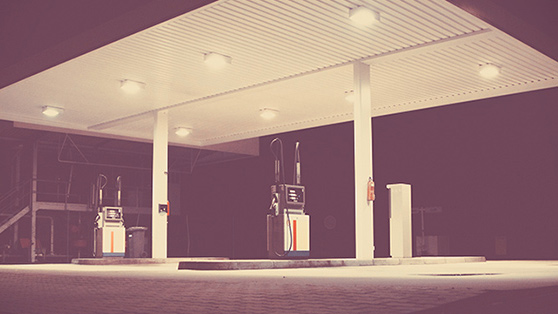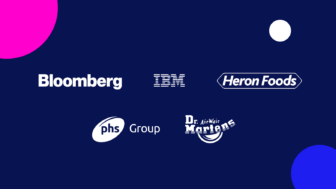
The downstream stage – the largest part of the oil and gas process – brings with it a wave of differing opportunities to work.
In fact, there are literally thousands of different jobs available in downstream alone, meaning that whatever your skillset, there’s an oil and gas job out there for you. Not sure you’re up-to-speed with what all the individual stages are?
Here’s our guide to everything you need to know about the downstream process:
Step one: Refining
The first, and arguably most integral, part of the downstream process is refining.
To put it simply, oil refining takes the crude oil, extracted during the upstream process, and turns it into a range of substances that we can use.
Refining is carried out through fractional distillation, a process which heats and separates the complex chemicals (mostly hydrocarbons) found in crude oil. Unwanted substances are removed, and any other materials produced are collected. After distillation, the fuels are transported to elsewhere in the refinery to be processed.
Oil refineries cost billions of pounds to build and maintain, and run 24 hours a day, 365 days a year. Because they’re such an expensive and essential part of the oil and gas industry, hiring the right people is of paramount importance. In fact, it’s estimated that somewhere in the region of 1.5million people work within refining worldwide.
Jobs available:
Due to the complexity and importance of refining within the downstream process, jobs are available in a wide range of disciplines including construction, engineering, management, maintenance and administration.
Refining jobs include Engineer (Project, Chemical, Electrical, etc.), Pipefitter, Welder, Cutter, Pump System Operator, Supervisor and Foreman.
Step two: Processing
Natural gas processing also happens within the downstream stage.
Along with crude oil, natural gas is generally found underground, usually in close proximity to the source of oil.
It’s in the downstream process that natural gas is rendered usable, by removing any water or other impurities and by-products such as sulphur and ethane
Processed natural gas is incredibly useful, being utilised for products ranging from fuel for cooking and heating, through to producing cement, fertiliser and petrochemicals and creating polyethylene polymers, the most widely-used type of plastic.
Once processed, it is then distributed for use.
Jobs available:
Jobs within the processing part of the oil and gas industry are also primarily found within oil refineries. However, roles vary greatly depending on what material is being produced.
Processing jobs include Process Engineer, Plant Operator, Product Controller and Turnaround (TAR) Manager.
Step three: Marketing & Distribution
Once the oil and gas products have been refined and processed, the next stage is to get them to market.
Marketing, a major component of this, involves the wholesale and distribution of the product, as well as other elements, such as pricing. Pricing and demand is heavily influenced by a number of different factors, such as distance, economic and political conditions, rig utilisation rates and oil contracts.
After marketing, products can then be distributed to the appropriate parties. Many of the major companies involved in the midstream process are also key players within the distribution process, transporting refined oil and processed natural gas out to retail outlets, factories and storage, or even their own facilities.
Transport involved could include conventional methods, such as oil tankers, trucks, and rail shipments, or go straight from the refinery into a complex piping network to reach their destination. Generally, most companies operate with a mix of transport types.
Jobs available:
There are a number of jobs you could do within the marketing and distribution stages of the downstream process, and many may be available to people working within similar roles in other industries.
Marketing and distribution jobs include Hazard Analyst, Commercial Analyst Marketing Assistant, Truck Driver, Barge Driver and other transport-based positions.
Step four: Retail
The final stage of the downstream process is retailing the finished product.
Some degree of these sales will come through selling petrol, diesel and other fuel straight to consumers. However, a large amount is also sold to factories and power plants, and within the transport industry.
The downstream industry also touches consumers through thousands of other products, such as heating oil, lubricants, synthetic rubber, plastics, fertilizers, antifreeze, pesticides and pharmaceuticals.
Once again, some of the larger companies (also known as ‘super majors’) may handle all elements of the downstream process themselves, including retail. However, there are only a handful of these within the entire industry (e.g. BP, Total, Shell), and even these companies may choose to operate with multiple other players within the sector for individual contracts.
Jobs available:
Probably the area where jobs are most abundant, the retail stage of the oil and gas process is the area in which those with excellent customer service skills excel.
Retail jobs include Petrol Pump Attendants, Retail Assistants, Accountants, Tax Accountants, and Field Sales Representatives.
Why should I work in the oil and gas industry?
Aside from being an incredibly diverse area to work within, the oil and gas industry is also one of the most lucrative. Annual salaries are well above national averages, and continue to grow year-on-year.
Other benefits include flexible working, and the opportunity to travel globally as part of your career. If you’re looking for a career with longevity, varied and exciting work and excellent pay, oil and gas might be for you.
To find out more about what the oil and gas sector can do for you, read our list of five reasons you should be working in the oil and gas industry.





